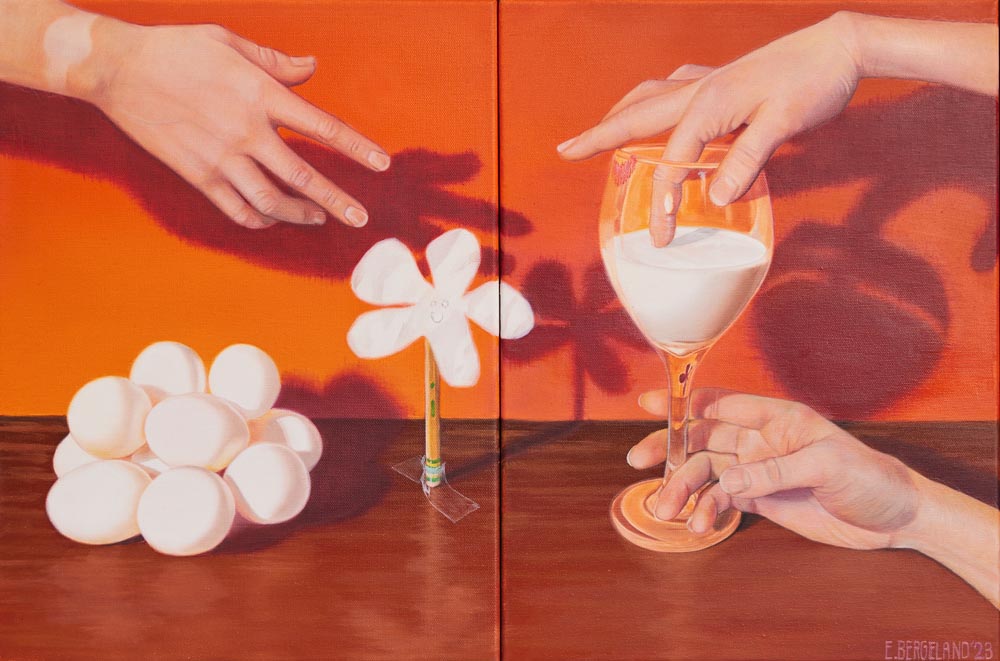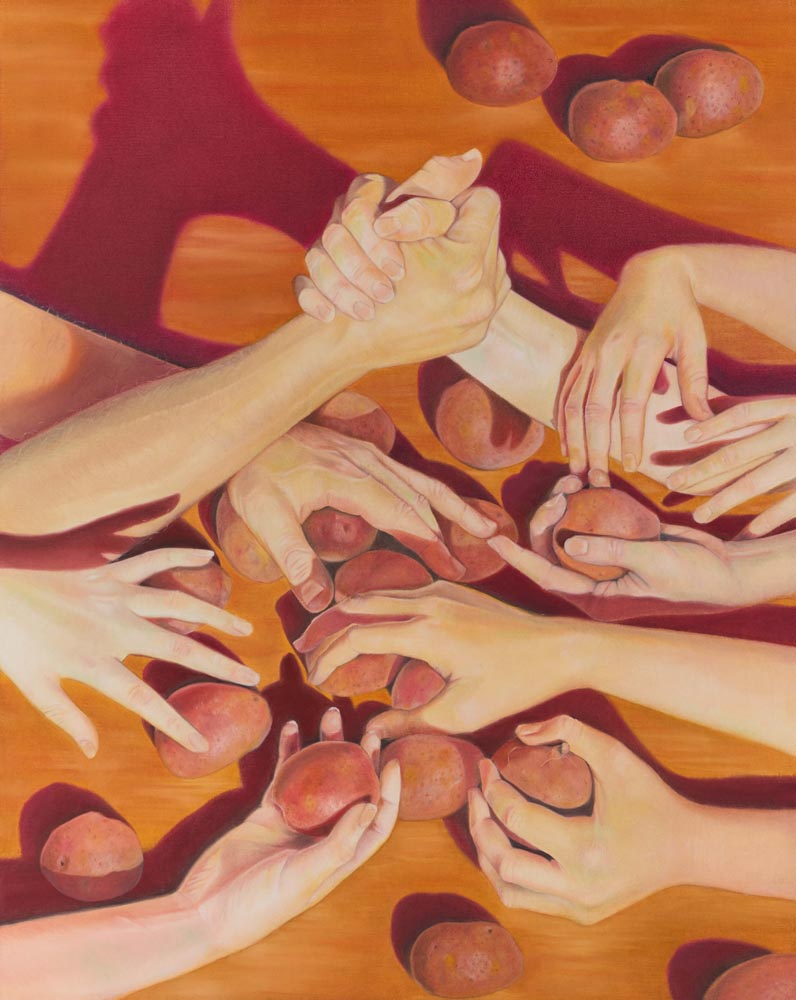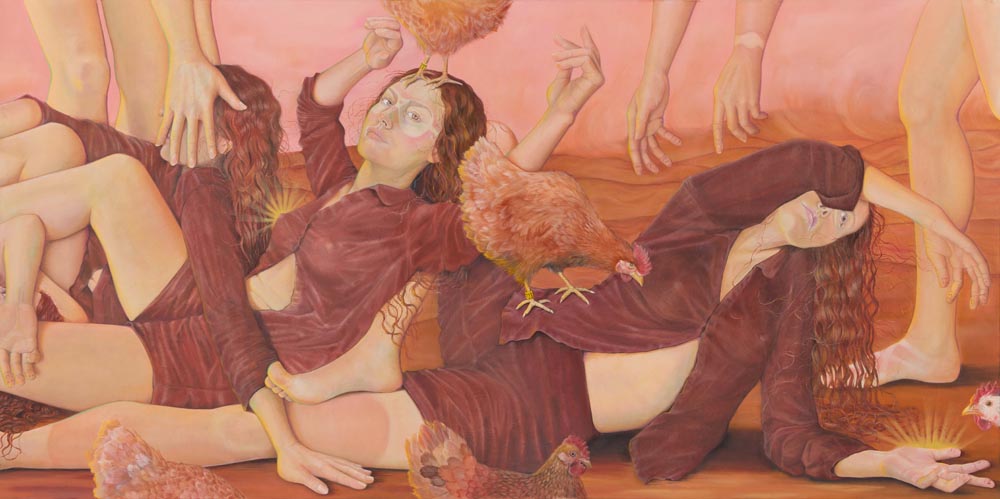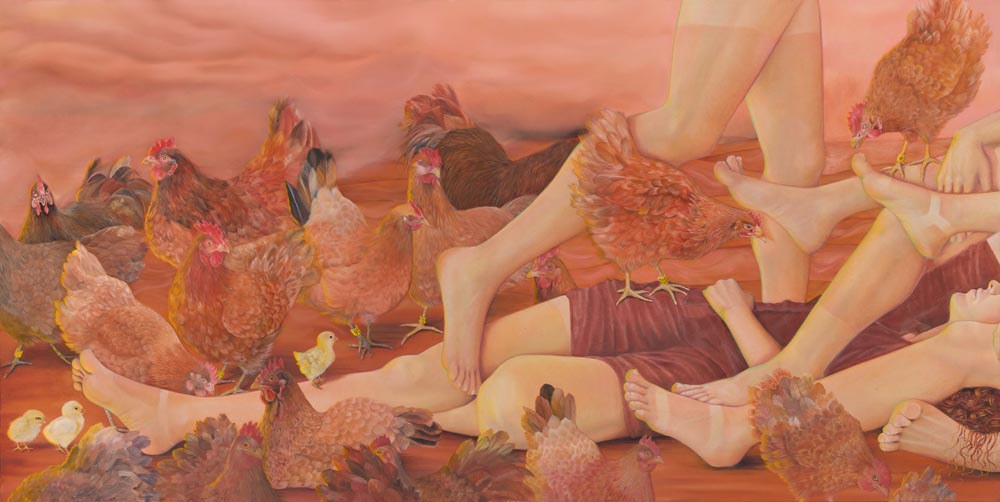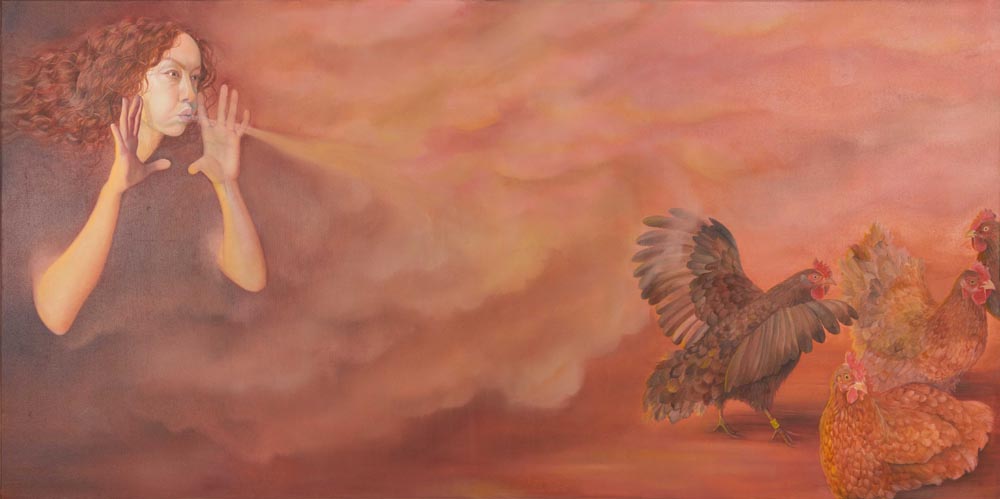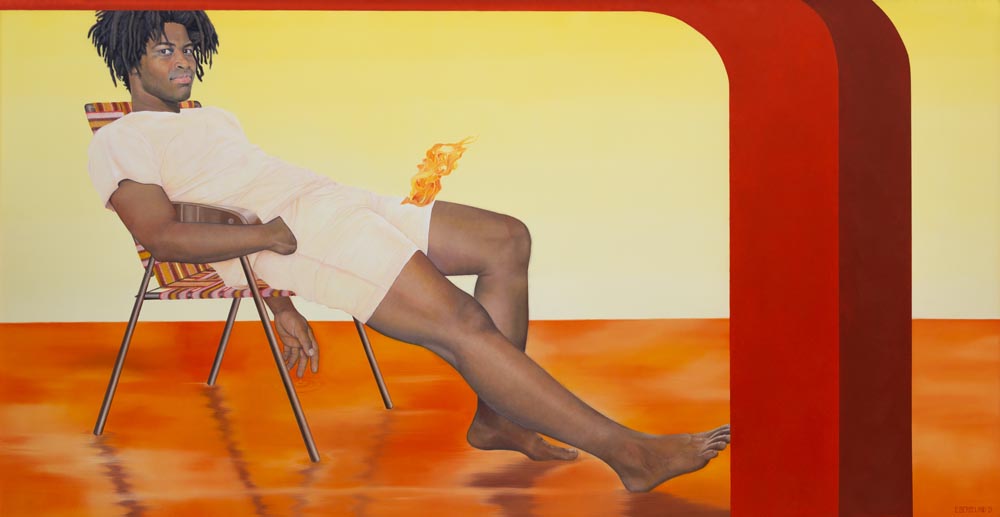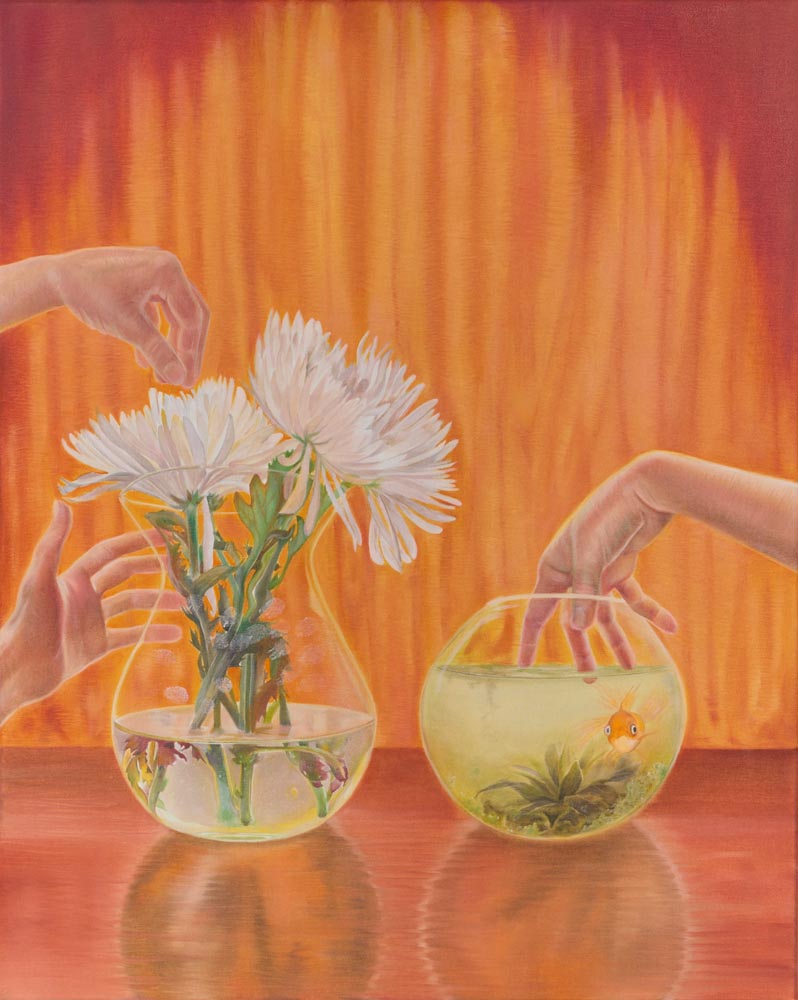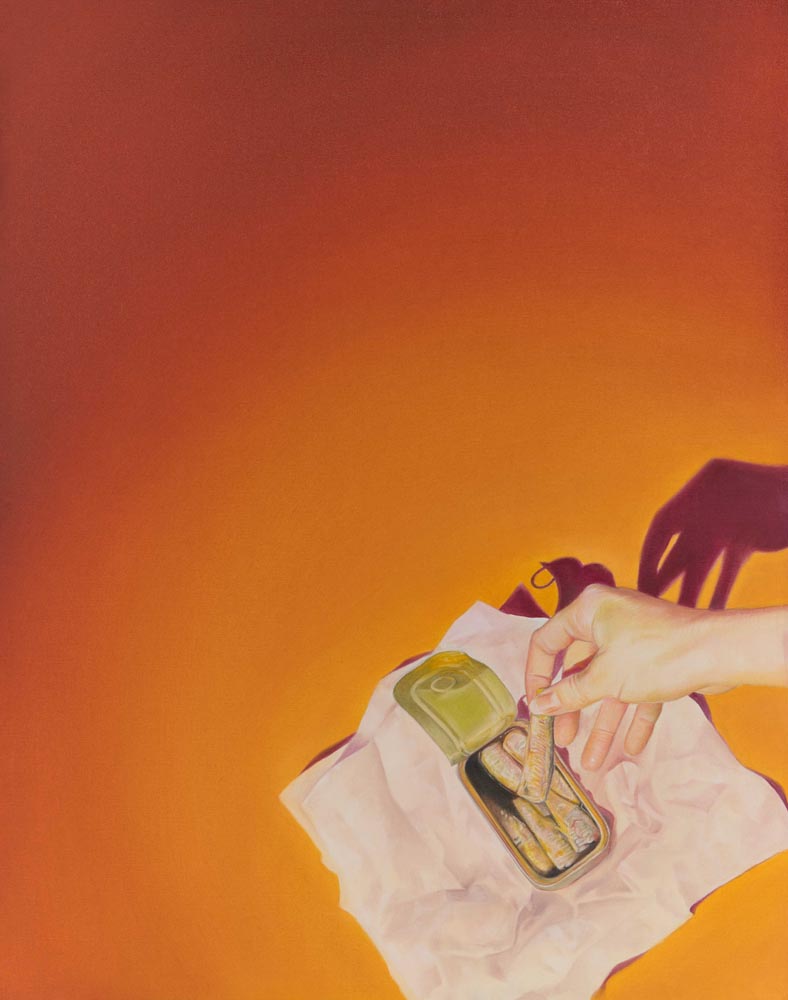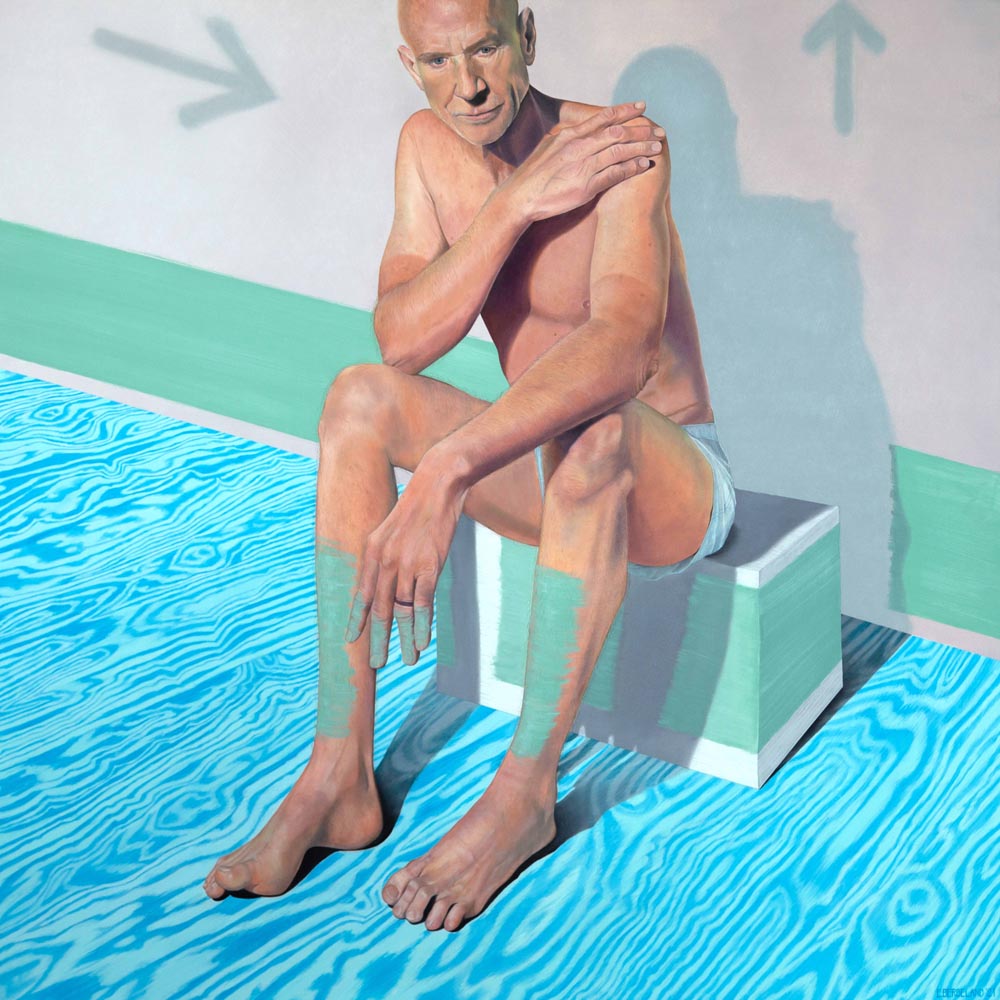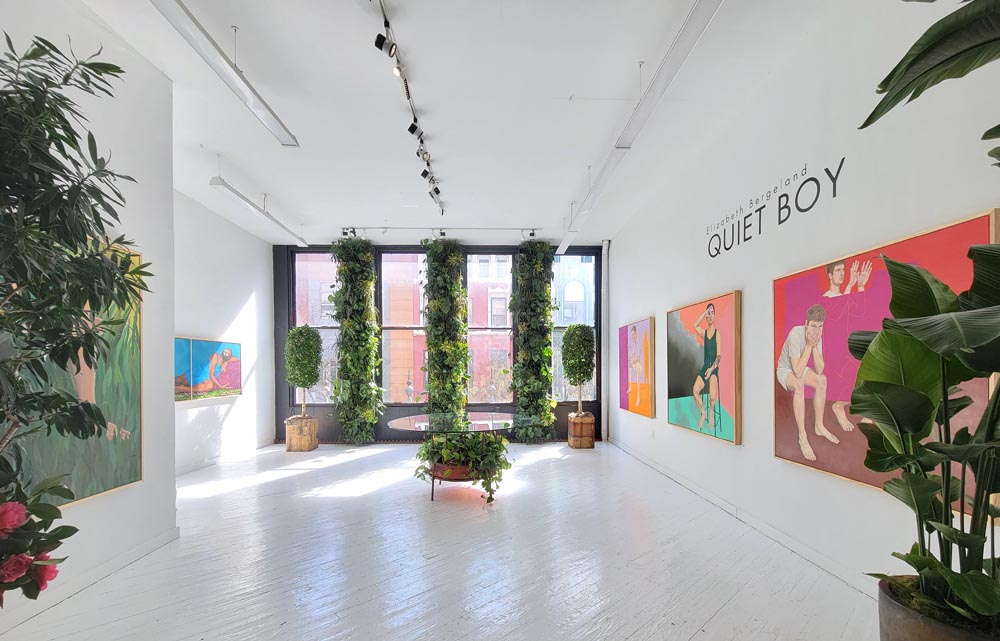Elizabeth Bergeland
Fall 2024 Cycle – Art
Philadelphia, PA elizabethbergeland.com
Artist Statement Biography
I arrived 15 years late to my art career. I feared I would never make it. I had three kids in my twenties before I knew what having three kids in your twenties meant. Before my frontal lobe was developed. Before I understood what that would mean for me as a woman who wanted an art career. Now, I paint every day and grapple with a different set of fears and frustrations: an equal/opposite [warring] desire for solitude in the studio v. a simple, abundant family life. I am plagued by the persistent panic that, as artist and mother, Cecily Brown states, "should I ultimately fail to reach my zenith as a painter, it will be because I chose to be a good mother". Abandoning my usual calculated approach to painting, my recent work unfolded more like writing in a diary. This cycle of creation and longing for solitude, then doubt and longing for connection has become a near constant in my process. These paintings log this inner tug of war.
My previous work delved into themes of masculinity—portraying male bodies through the female gaze in a deliberate effort to flip the script. This dive into the topic of masculinity began for me at the confluence of: (1) feeling tired and bored of seeing predominantly female bodies in paintings, and (2) noticing my adolescent son suddenly exhibiting traits considered archetypal male: a resistance toward crying or being seen as sensitive and avoiding more “feminine” colors or activities.
I worked from of a journalistic lens, interviewing and painting men, which has for me, exposed a blaring gap with how much has been left out of the public narrative of gender inequality; men have money, power, and prestige, but they are often barred from intimate platonic relationships, emotional honesty, and are saddled with a near constant pressure to prove their masculinity, often resulting in isolation, loneliness or aggression. I transcribed what I was hearing into large-scale portraits, relying heavily on symbolism, placing the figures in imagined rooms or landscapes. This body of work, which I entitled, “Quiet Boy”, highlighted the stark contrast between external perceptions of power and the internal sense of exile described by many of my subjects and friends, reflecting what numerous researchers have termed an 'epidemic of male loneliness’- which is quite possibly, the most dangerous thing in the world.
I arrived 15 years late to my art career. I feared I would never make it. I had three kids in my twenties before I knew what having three kids in your twenties meant. Before my frontal lobe was developed. Before I understood what that would mean for me as a woman who wanted an art career. Now, I paint every day and grapple with a different set of fears and frustrations: an equal/opposite [warring] desire for solitude in the studio v. a simple, abundant family life. I am plagued by the persistent panic that, as artist and mother, Cecily Brown states, "should I ultimately fail to reach my zenith as a painter, it will be because I chose to be a good mother". Abandoning my usual calculated approach to painting, my recent work unfolded more like writing in a diary. This cycle of creation and longing for solitude, then doubt and longing for connection has become a near constant in my process. These paintings log this inner tug of war.
My previous work delved into themes of masculinity—portraying male bodies through the female gaze in a deliberate effort to flip the script. This dive into the topic of masculinity began for me at the confluence of: (1) feeling tired and bored of seeing predominantly female bodies in paintings, and (2) noticing my adolescent son suddenly exhibiting traits considered archetypal male: a resistance toward crying or being seen as sensitive and avoiding more “feminine” colors or activities.
I worked from of a journalistic lens, interviewing and painting men, which has for me, exposed a blaring gap with how much has been left out of the public narrative of gender inequality; men have money, power, and prestige, but they are often barred from intimate platonic relationships, emotional honesty, and are saddled with a near constant pressure to prove their masculinity, often resulting in isolation, loneliness or aggression. I transcribed what I was hearing into large-scale portraits, relying heavily on symbolism, placing the figures in imagined rooms or landscapes. This body of work, which I entitled, “Quiet Boy”, highlighted the stark contrast between external perceptions of power and the internal sense of exile described by many of my subjects and friends, reflecting what numerous researchers have termed an 'epidemic of male loneliness’- which is quite possibly, the most dangerous thing in the world.
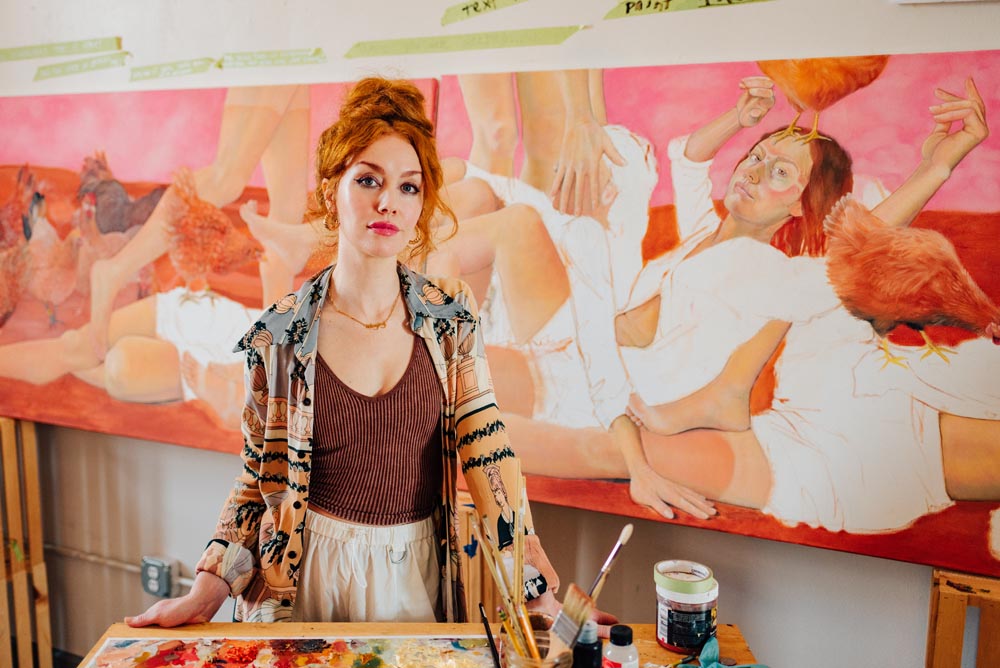
Sign Up for Our Mailing List
Sign Up for Our Mailing List
To Receive Grant Cycle Deadlines and Winner Announcements
To Receive Grant Cycle Deadlines and Winner Announcements
